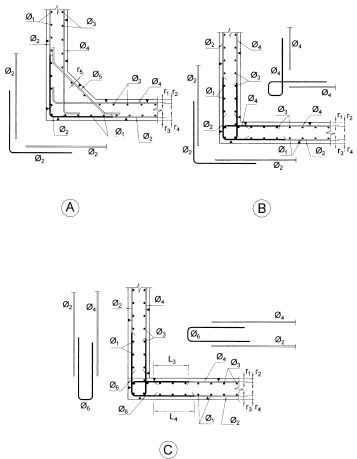CJLCivilStruct
Structural
Firstly, I appreciate that there are a few threads similar to this - but i'm hoping this is a little more specific.
Exam question: At what point (Design moment / utilisation ratio or other) are haunches / haunch bars required on a 90 degree reinforced concrete joint? Either Wall to Wall or Wall to Base connections with high moments (storm tanks / retaining walls etc).
Typically we detail joints using a 3 bar moment connection (example attached). However, I've been going down the rabit hole recently as there doesn't seem to be any rationale behind it (that i've found) other than it being standard practice in the UK. I've attached an example for reference.
For example, if you were designing and detailing a deep tank where corner or base to wall moments are in the order of 200 kNm, with approximately a 600mm thick section would you be comfortable without a haunch? If not, why not and how would you justify your choice?
Finally, if there are any examples shedding light on the subject I would be very greatful if you could highlight them to me?
Thanks in advance - just a young engineer trying to gain some knowledge.
Exam question: At what point (Design moment / utilisation ratio or other) are haunches / haunch bars required on a 90 degree reinforced concrete joint? Either Wall to Wall or Wall to Base connections with high moments (storm tanks / retaining walls etc).
Typically we detail joints using a 3 bar moment connection (example attached). However, I've been going down the rabit hole recently as there doesn't seem to be any rationale behind it (that i've found) other than it being standard practice in the UK. I've attached an example for reference.
For example, if you were designing and detailing a deep tank where corner or base to wall moments are in the order of 200 kNm, with approximately a 600mm thick section would you be comfortable without a haunch? If not, why not and how would you justify your choice?
Finally, if there are any examples shedding light on the subject I would be very greatful if you could highlight them to me?
Thanks in advance - just a young engineer trying to gain some knowledge.

